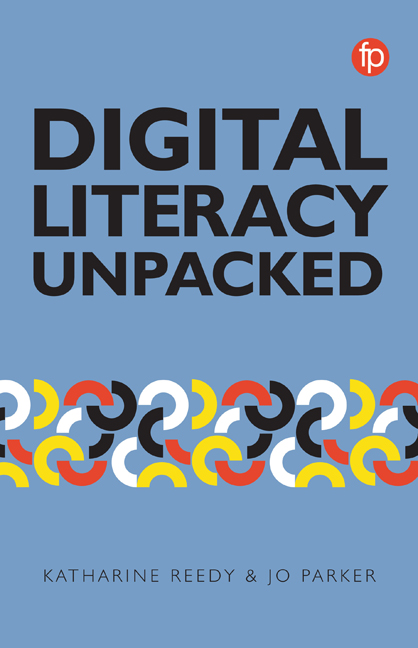Book contents
- Frontmatter
- Contents
- List of figures and case studies
- Foreword
- Notes on Contributors
- Introduction
- Part I Approaching Digital Literacy
- Part II Learning in a Digital World
- Part III Developing Staff Digital Literacies
- 8 D4 Curriculum Design Workshops: a Model for Developing Digital Literacy in Practice
- 9 #CreativeHE: an Animated Google Plus Platform for Challenging Practitioners to Think Differently
- 10 Developing Library Staff Digital Literacies
- Part IV Digital Citizens and Workers
- Conclusion
- Index
9 - #CreativeHE: an Animated Google Plus Platform for Challenging Practitioners to Think Differently
from Part III - Developing Staff Digital Literacies
Published online by Cambridge University Press: 24 September 2019
- Frontmatter
- Contents
- List of figures and case studies
- Foreword
- Notes on Contributors
- Introduction
- Part I Approaching Digital Literacy
- Part II Learning in a Digital World
- Part III Developing Staff Digital Literacies
- 8 D4 Curriculum Design Workshops: a Model for Developing Digital Literacy in Practice
- 9 #CreativeHE: an Animated Google Plus Platform for Challenging Practitioners to Think Differently
- 10 Developing Library Staff Digital Literacies
- Part IV Digital Citizens and Workers
- Conclusion
- Index
Summary
Open, collaborative social learning
Bringing together individuals from diverse backgrounds, who would perhaps normally not learn together, has been enabled through freely available internet-connected social media and learning and teaching approaches that are open, collaborative and explorative or inquiry based. The #creativeHE initiative can be characterised as a ‘little’ open edu - cational practice based on Weller's (2011) idea of ‘little’ open educational resource, as it is a practitioner-driven undertaking that is flexible and an informal collaboration among practitioners in different higher education institutions and other organisations.
Crawford's (2009) and Beetham's (2015) work suggests that academics reach outside their institutions to engage in professional networks to enhance their teaching as it gives them a sense of belonging and development opportunities that are tailored to their needs and aspirations. This happens especially after they have completed their teaching qualification internally. While Conole (2013) recognises that the boundaries between formal and informal learning have started to blur, the call for more open and connected higher education and crossinstitutional collaboration is advocated by the British Council (2015), HEFCE (2011) and the European Commission (2013), for example, and creates new opportunities for making this happen further. Academic development can play an essential role in modelling such approaches and provide academic staff opportunities to experience these as learners first, which research shows is an effective strategy to change perceptions and practices (Beetham, 2015; Smyth, 2009). Nerantzi's (2011) phenomen - ographic study is such an example. She explored an informal cross-institutional collaboration in an academic development context and brought together postgraduate certificate participants from different higher education institutions in the UK to learn about assessment and feedback using problem-based learning in facilitated groups. This led to Nerantzi's PhD study (Nerantzi, 2017) through which she explored the collaborative open learner experience and developed a cross-boundary collaborative open learning framework for cross-institutional academic development, which is one of the key outputs.
Pedagogical thinking and practices
The #creativeHE Google Plus community platform provides a virtual space within which people can interact, share and comment on ideas, exper - iences, practices and resources. For it to have educational value it must attract people who are willing to participate in social learning processes and be animated by people who are able to create frameworks for discussion, experimentation and learning (the course or discussion leaders).
- Type
- Chapter
- Information
- Digital Literacy Unpacked , pp. 123 - 138Publisher: FacetPrint publication year: 2018



